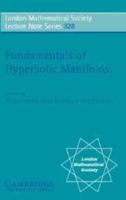Publisher's Synopsis
Primary elements: Euclid in living color
Nearly a century before Mondrian made geometrical red, yellow, and blue lines famous, 19th century mathematician Oliver Byrne employed the color scheme for the figures and diagrams in his most unusual 1847 edition of Euclid's Elements. The author makes it clear in his subtitle that this is a didactic measure intended to distinguish his edition from all others: "The Elements of Euclid in which coloured diagrams and symbols are used instead of letters for the greater ease of learners." As Surveyor of Her Majesty's Settlements in the Falkland Islands, Byrne had already published mathematical and engineering works previous to 1847, but never anything like his edition on Euclid. This remarkable example of Victorian printing has been described as one of the oddest and most beautiful books of the 19th century.
Each proposition is set in Caslon italic, with a four-line initial, while the rest of the page is a unique riot of red, yellow, and blue. On some pages, letters and numbers only are printed in color, sprinkled over the pages like tiny wild flowers and demanding the most meticulous alignment of the different color plates for printing. Elsewhere, solid squares, triangles, and circles are printed in bright colors, expressing a verve not seen again on the pages of a book until the era of Dufy, Matisse, and Derain.
Each proposition is set in Caslon italic, with a four-line initial, while the rest of the page is a unique riot of red, yellow, and blue. On some pages, letters and numbers only are printed in color, sprinkled over the pages like tiny wild flowers and demanding the most meticulous alignment of the different color plates for printing. Elsewhere, solid squares, triangles, and circles are printed in bright colors, expressing a verve not seen again on the pages of a book until the era of Dufy, Matisse, and Derain.
Text in English, French, and German









